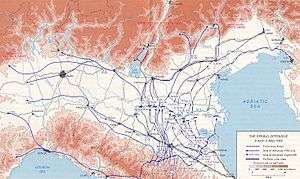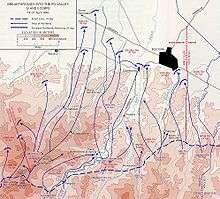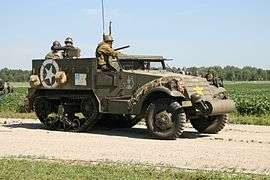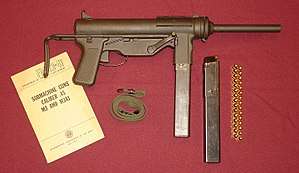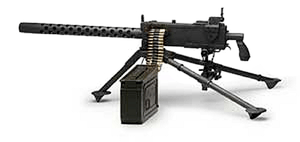181st Infantry Brigade (United States)
| 181st Infantry Brigade | |
|---|---|
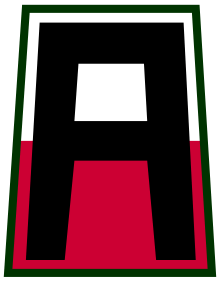 Shoulder sleeve insignia | |
| Active |
5 August 1917 – 19 November 1945 25 January 1947 – 17 May 1954 17 April 1956 – 1 May 1959 1 April 1963 – 31 December 1965 1 December 2006 – present |
| Country | United States |
| Branch | Army Reserve |
| Type | Infantry |
| Role | Training |
| Size | Brigade |
| Part of | 1st Army |
| Garrison/HQ | Fort McCoy, Wisconsin |
| Nickname(s) | Eagle Brigade |
| Motto(s) |
Docere Bellum Et Pax Pacis "To Win War and Peace"[1] |
| Colors | Black & Red |
| Anniversaries | 5 August 1917 |
| Decorations | Army Superior Unit Award |
| Battle honours |
World War I World War II |
| Commanders | |
| Current commander | Colonel James "Brooks" Schultze[2] |
| Notable commanders |
Major Oscar F. Miller Medal of Honor Colonel Jeffrey J. Kulp Colonel Shawn Klawunder |
| Insignia | |
| Distinctive unit insignia |
 |
| Designated but not authorized shoulder sleeve insignia |
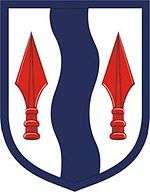 |
The 181st Infantry Brigade is an infantry brigade of the United States Army based at Fort McCoy, Wisconsin. As an Active Component/Reserve Component (AC/RC) brigade, the unit serves primarily in a training role for other units of the US armed forces. The brigade is subordinate to the First United States Army, headquartered at Rock Island Arsenal, Illinois.[3] It has ten subordinate battalions.
The unit is responsible for training selected United States Army Reserve and Army National Guard units in the Central-Northern United States. The unit was formerly designated as 2nd Brigade, 63rd Infantry Division. The brigade was redesignated and re-missioned several times: such as in 1999, when the 181st was merged with the 2nd Brigade, 85th Division[4] and carried that name and lineage from October 1993 until December 2006. The 181st Infantry Brigade currently falls under the 1st Army's Division West, headquartered at Fort Hood, Texas.
Organization
World War I[5]
During World War I, infantry brigades were purely tactical formations. Administrative and logistical functions were conducted by the division headquarters.[6]
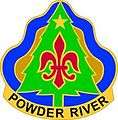
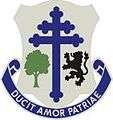


World War II
With the demise of the Square Division in favor of the Triangular division, the now surplus brigade headquarters were converted into either the divisional headquarters company or the division's reconnaissance troop. The 181st was selected to transform into the 91st Infantry Division's reconnaissance troop. [8]

Global War on Terror

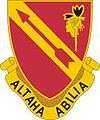
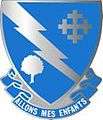


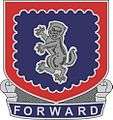

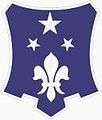

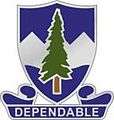
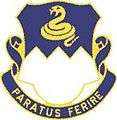
History
World War I
During World War I, the 181st Infantry Brigade was constituted 5 August 1917[10] in the National Army at Camp Lewis, Washington as a subordinate unit of the 91st Infantry Division.[3] The Brigade was composed of 8,134 personnel organized in a Headquarters Detachment with 5 Officers and 18 Enlisted Soldiers, the 361st and 362nd Infantry Regiments each with 3,755 Officers and Enlisted Soldiers, and the 347th Machine Gun Battalion with 581 Officers and Enlisted Soldiers.[11] The 181st Infantry Brigade trained for 10 months at Camp Lewis prior to being deployed to France in August 1918[12] under the command of Brig. Gen. John McDonald.[13] After the Meuse-Argonne Offensive and the liberation of France, the Brigade was sent to assist the British during the battle of Ypres-Lys until the signing of the Armistice on 11 November 1918, which ended World War I. After four months of peacekeeping operations in liberated Belgium, the Brigade returned to the United States and arrived at the port of New York on 2 April 1919 on the U.S.S. Orizaba.[12]
Inter War Period
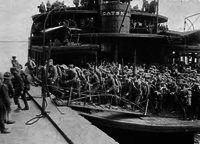
The Brigade was transferred on 2 April 1919 to Camp Merritt, New Jersey. It proceeded to Camp Kearny, California, where it was demobilized on 19 April 1919. The Brigade was reconstituted in the Organized Reserve on 24 June 1921, still assigned to the 91st Division, and allotted to the Ninth Corps Area. The Brigade was redesignated Headquarters & Headquarters Company (HHC), 181st Brigade on 23 March 1925 and again redesignated HHC, 181st Infantry Brigade on 24 August 1936. The unit conducted summer training most years at Del Monte, California, from 1922–40. Subordinate regiments conducted training for the Citizens Military Training Camp (CMTC) at the Presidio of San Francisco, the Presidio of Monterey and at Del Monte; often with assistance from the 30th Infantry Regiment.[14]
World War II
The 91st Reconnaissance Troop participated in the Rome-Arno (22 Jan 44 - 9 Sep 44), North Apennines (10 Sep 44 - 4 April 45), and Po Valley (5 Apr 45 - 8 May 45) campaigns. In July 1944, during the Arno Campaign of the Second World War, the 91st Reconnaissance Troop spearheaded Task Force Williamson under the command of Brigadier General E.S. Williamson, Assistant Division Commander for the 91st Division. The 2nd Platoon of the 91st Reconnaissance Troop and the 1st Battalion, 363rd Infantry were the first to enter Leghorn (Livorno) on its way to liberating Pisa.
- The Troops was composed of:
- Officers: 6
- Enlisted Soldiers: 149
- Equipment:
- M8 Greyhound: 13
- M3 Half-track: 5
- 1/4 Ton Jeep: 24
- M3 submachine gun: 30
- M1 carbine: 99
- M1 Garand: 26
- M2 Browning: 3
- M1919 Browning machine gun: 13
- M9 Rocket Launcher: 5
- M2 mortar: 9
Post-War
After VE day, the Brigade was deactivated and reconstituted several times through 1945 as a headquarters and headquarters company and a reconnaissance troop. It was reactivated in 1947 as a mechanized cavalry reconnaissance troop; redesignated in 1949 as the 91st Reconnaissance Company.
The unit was active from April 1963 until December 1965 as the Headquarters and Headquarters Company, 2nd Brigade, 63rd Infantry Division. From January 1966 through December 2006, the unit was inactive.
Realignment as a Training Brigade
The 181st Infantry Brigade was reactivated at Fort McCoy, Wisconsin in December 2006. The Brigade trains soldiers, sailors and airmen to support contingency operations in the Global War on Terror. The 181st facilitates the WAREXs (Warrior Exercise) focused on platoon level training, and CSTXs (Combat Support Training Exercise)[16][17][18] that focus on Company level training in support of the 86th Training Division and the 84th Training Command. Annually, the 181st provides battalions to serve as Observer/Controllers to the NTC and JRTC to train Army Reserve and National Guard units conducting rotations. The Brigade also provided Master Gunners and other subject matter experts to support Operation Cold Steel, a major initiative to improve the Army Reserve's gunnery training, from February through May 2018.[19][20]
- Fort McCoy historic gate
 1-338th training deploying soldiers from the 101st Engineer Battalion September, 2009
1-338th training deploying soldiers from the 101st Engineer Battalion September, 2009 3-340th training the 824th Quartermaster Company (Heavy Airdrop Supply) during CSTX August, 2015
3-340th training the 824th Quartermaster Company (Heavy Airdrop Supply) during CSTX August, 2015 1-337th BSB Observer/Controller-Trainer conducts an After-action review at Camp Ripley during CSTX 86-17-03
1-337th BSB Observer/Controller-Trainer conducts an After-action review at Camp Ripley during CSTX 86-17-03
Campaign participation credit[21][22]
| Conflict | Streamer | Year(s) |
|---|---|---|
| World War I |
Ypres-Lys | 1918 |
| Meuse-Argonne | 1918 | |
| Lorraine | 1918 | |
| World War II |
Rome-Arno | 1944 |
| North Apennines | 1944 | |
| Po Valley | 1945 |
Decorations[23]
| Ribbon | Award | Year | Orders |
|---|---|---|---|
| Army Superior Unit Award | 2008-2011 | 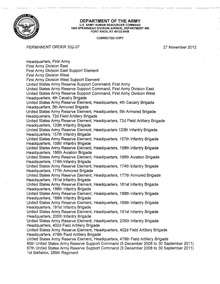 Permanent Orders 332-07 announcing award of the Army Superior Unit award |
Shoulder sleeve insignia[24]

* Description: On a background equally divided horizontally white and red, 3¼ inches high and 2½ inches wide at base and 2⅛ inches wide at top, a black block letter "A", 2¾ inches high, 2 inches wide at base and 1⅝ inches wide at top, all members 7/16 inch wide, all enclosed within a 1/8 inch Army Green border.
- Symbolism:
- The red and white of the background are the colors used in flags for Armies.
- The letter "A" represents "Army" and is also the first letter of the alphabet suggesting "First Army."
- Background:
- A black letter "A" was approved as the authorized insignia by the Commanding General, American Expedition Force, on 16 November 1918 and approved by the War Department on 5 May 1922.
- The background was added on 17 November 1950.
Distinctive Unit Insignia[25]

* Description/Blazon: A Silver color metal and enamel device 1 1/8 inches (2.86 cm) in height overall blazoned as follows: Per bend Argent and Azure, in chief a clevis (key) bendwise Or, wards upward and inward and on a base of the first, a rifle, muzzle upward and a saber, grip to base in saltire of the third. Attached below the device a red scroll inscribed "DOCERE BELLUM ET PAX PACIS" in Silver.
- Symbolism: The diagonal separation of colors denotes a line not crossed. The clevis (key) symbolizes the unit's long history and knowledge as being a key to winning the battle. The crossed rifle and saber allude to the Brigade's mission during World War II as the 91st Reconnaissance Cavalry Company. The motto translates to "To Win War and Peace."
- Background: The distinctive unit insignia was approved on 14 August 2007.
References
- ↑ The Institute of Heraldry: 181st Infantry Brigade, The Institute of Heraldry. Retrieved 14 June 2008.
- ↑ https://www.dvidshub.net/news/243809/new-commander-assumes-leadership-181st-mftb-fort-mccoy New commander assumes leadership of 181st MFTB at Fort McCoy
- 1 2 3 Army, Division West Organization, United States Army. Retrieved 17 March 2015.
- ↑ Lineage and Honors 2d Brigade, 85th Division
- ↑ World War I organization of the 91st Division
- ↑ https://usacac.army.mil/cac2/cgsc/carl/download/csipubs/Brigade-AHistory.pdf The Brigade A History p33
- ↑ History of the 347th machine gun battalion. Oakland, California: Horwinski Company. OCLC 5426921. Retrieved 11 October 2015.
- ↑ https://usacac.army.mil/cac2/cgsc/carl/download/csipubs/Brigade-AHistory.pdf The Brigade A History p47
- ↑ 1st Army Division West page for the 181st infantry brigade as of 10 JUL 15
- ↑ 181st Infantry Brigade Homepage, 181st Infantry Brigade Staff 7 January 2008.
- ↑ Maneuver and Firepower p55
- 1 2 Lineage and Honors for 181st Infantry Brigade, United States Army. Retrieved 14 June 2008.
- ↑ Bill, Thayer (2016). "John B. McDonald". penelope.uchicago.edu. Retrieved 1 July 2018.
- ↑ The US Army Order of Battle from 1919-1941 p340
- ↑ World War II Order of Battle, Shelby Stanton, Galahad Books 1984
- ↑ https://www.army.mil/standto/2018-03-19 Combat Support Training Exercise
- ↑ http://www.usar.army.mil/News/Tag/95141/combat-support-training-exercise/ Army Reserve News Articles for Combat Support Training Exercises
- ↑ https://www.youtube.com/watch?v=RK5Jgk80894 Fort McCoy: Combat Support Training Exercise
- ↑ http://www.usar.army.mil/Featured/Training-Exercises/Cold-Steel/ Operation Cold Steel home page
- ↑ http://www.usar.army.mil/News/Display/Article/1443400/staged-equipment-for-operation-cold-steel-ii-at-fort-mccoy/ Staged equipment for Operation Cold Steel II at Fort McCoy
- ↑ U.S. Army Center of Military History (CMH). "Listing of the Campaigns of the U.S. Army Displayed on the Army Flag | U.S. Army Center of Military History (CMH)". history.army.mil. Retrieved 2015-03-03.
- ↑ War Department General Order #24 Listing Campaigns
- ↑ Permanent Order 332-07
- ↑ First Army insignia page at the Institute of Heraldry
- ↑ Brigade DUI
- The Brigade, A History by John J. McGrath from the Combat Studies Institute Press, Fort Leavenworth, Kansas.
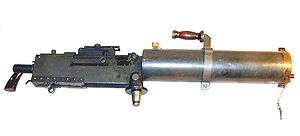
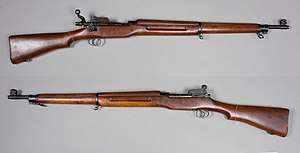

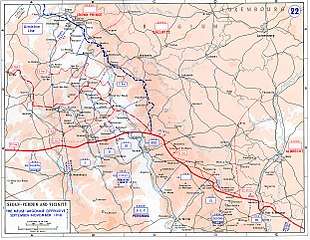
.jpg)
